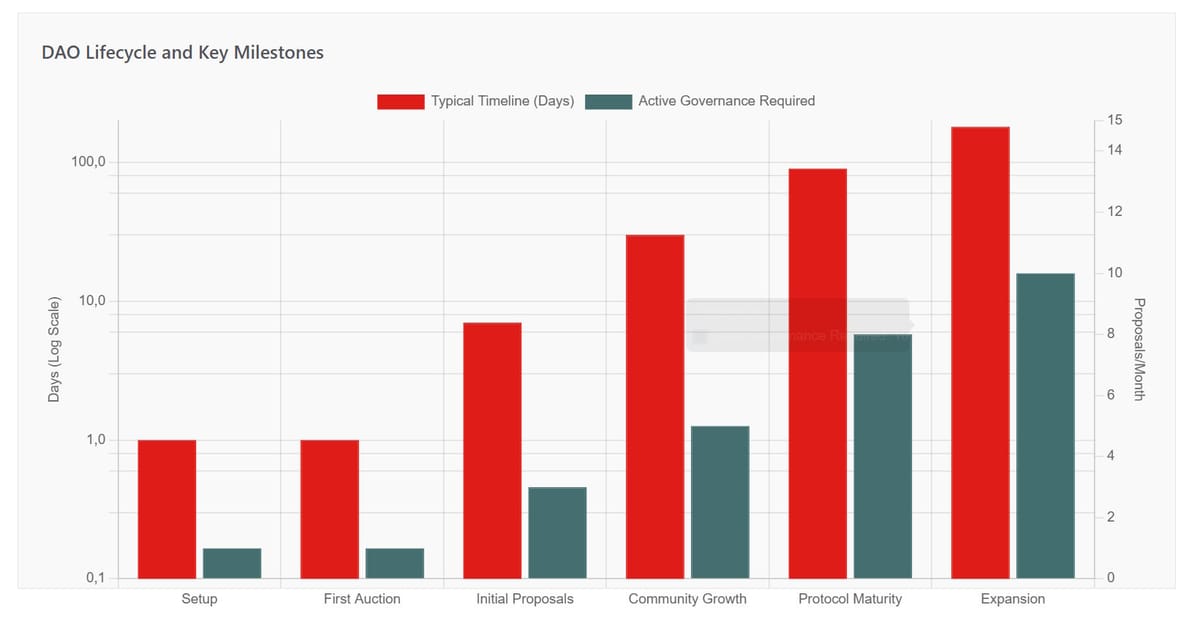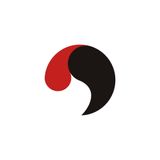Nouns Builder Projects Worth Exploring in 2025

Nouns Builder launched in November 2022 as free infrastructure for creating DAOs with NFT-based governance. The platform enables anyone to deploy a Nounish DAO without coding. Each DAO runs perpetual auctions, funding treasuries through daily or custom-cadence NFT sales. This creates sustainable community financing for public goods, protocol development, and niche communities.
Most Builder DAOs migrated to Base Layer 2 between 2024 and 2025. This reduced voting costs from $20+ to under $1. The platform now supports Ethereum, Base, and Optimism. Projects choose networks based on their community priorities and budget constraints.
Active DAOs span diverse focuses. Purple funds Farcaster protocol. Gnars sponsors extreme athletes. City Nouns creates location-based communities. Each operates independently while sharing auction mechanics and governance architecture. Treasury funds deploy through member proposals, making each DAO reflect its community values.
Purple DAO
Purple launched October 25, 2022 as the first major Farcaster-focused DAO on Nouns Builder. The collective funds protocol development, client applications, and ecosystem growth for Farcaster's decentralized social network.
The DAO pioneered several governance innovations. Purple implemented Hats Protocol for automated role management in 2024. Election winners automatically receive designated powers through onchain credentials. This eliminated manual multisig updates and reduced governance overhead by 80%.
Governance Structure
Purple operates without founder allocations. Every token enters circulation through public auctions. The DAO established Security Council with veto power through JokeRace elections. Token holders submit candidates and vote, with results enforced automatically via smart contracts.
Key roles include Grants Chair, Revenue Chair, and Events Chair. Each position has defined responsibilities and budgets. Term limits trigger automatic re-elections, ensuring accountability. This structure became a model for other Builder DAOs seeking efficient operations.
Community Programs
The DAO runs retroactive grant rounds for Farcaster builders. Recipients include client developers, frame creators, and tool builders. Purple also funds events like FarCon and FarHack. These initiatives drive adoption while strengthening decentralized social infrastructure.
Purple expanded internationally in 2025. Frecuencia Común proposed launching Spanish-language DAO to bring Farcaster to 500 million Spanish speakers. This demonstrates how Builder DAOs can spawn localized versions while maintaining coordination through shared infrastructure.
Gnars DAO
Gnars funds extreme sports athletes through community treasury. The DAO started on Ethereum and migrated to Base by 2025. Auctions run every 666 blocks (approximately 2.5 hours), creating frequent opportunities for participation.
The project reimagines athlete sponsorship. Instead of energy drink companies, athletes receive funding from community treasury. Members vote on which athletes to support, event budgets, and merchandise decisions. This keeps sponsorships aligned with athlete values rather than corporate interests.
Athlete Support
Gnars funded skateboarding initiatives across multiple continents. The DAO supported Ugandan Skateboarding Association with equipment and merch. Filipino skateboarding clubs received funding for tournaments and onboarding events. Athletes from skiing to BMX submitted proposals for travel, content creation, and equipment.
Recent proposals include ETHDenver smoke lounge, Bangkok Blunt Olympics during DevCon, and Tony Hawk Pro Skater competitions. The DAO emphasizes real-world activations that onboard new members while supporting existing athletes.
Platform and Content
Gnars built That's Gnarly platform for athlete content. The site hosts Gnar O'Clock daily drops at 9:30pm EST. Athletes submit content, connect with fans, and earn rewards for engagement. This creates ongoing relationship between athletes and supporters beyond one-time sponsorships.
The DAO integrated with SkateHive and SurfHive, where community members publish content and receive compensation. This decentralized approach to content monetization ensures athletes control their narratives while building sustainable income streams.
| DAO Project | Launch Date | Primary Focus | Network | Auction Cadence |
|---|---|---|---|---|
| Purple | Oct 25, 2022 | Farcaster Protocol | Base | Daily |
| Gnars | 2022 | Extreme Sports | Base | Every 666 blocks |
| Builder DAO | Nov 1, 2022 | Platform Development | Base | Daily |
| Based DAO | 2024 | Base Ecosystem | Base | Daily |
| City Nouns | May 2025 | City-Based DAOs | Base | Daily |
| Public Assembly | Oct 2022 | Creative Coding | Ethereum | Daily |
| Park DAO | Nov 2022 | Music Onchain | Ethereum | Daily |
Data: Nouns Builder platform data and DAO launch information
Builder DAO
Builder DAO governs Nouns Builder protocol itself. The DAO launched November 1, 2022 with daily auctions. Nouns DAO allocated 5% founder rewards to Nouns and 10% to Zora. Platform charges 2% fee on auction sales, split between Builder, Nouns, and Zora.
The DAO executed coordinated Base migration in March 2024. Members received 1:1 airdrops of Base-native tokens. Migration reduced governance costs and increased participation. Proposal 90 detailed launch week coordination with other Builder DAOs including BasePaint theme and Twitter Spaces.
Platform Development
Builder DAO funds infrastructure improvements. Recent proposals include City Nouns initiative (4 ETH), protocol upgrades, and multi-chain expansion. The DAO experiments with governance models that other Builder DAOs adopt.
The collective tests new features before wider rollout. This includes Agora integration, Hats Protocol implementation, and delegation improvements. Builder acts as both platform operator and governance laboratory.
City Nouns
City Nouns launched May 2025 as location-based DAO framework. Kansas City became first implementation, timed with Pizza DAO's Global Pizza Day. The initiative aims to deploy 10 city-specific DAOs by December 2025.
Each city operates independent DAO with local treasury and governance. Global City Nouns parent DAO coordinates network, provides templates, and receives 10% of city auction proceeds. This creates shared infrastructure while maintaining local autonomy.
City-Based Governance Model
Cities fund local public goods through DAO treasuries. Kansas City DAO works with artists, galleries, and cultural institutions. Monthly events include meetups, workshops, and art drops. Educational initiatives onboard merchants and creators to Web3.
Roadmap includes Passport Program rewarding collectors who engage with multiple city DAOs. Impact Quests create competition between cities for treasury-funded rewards. Story Protocol integration enables local artists to tokenize work with copyright protection.
Expansion Strategy
City Nouns developed playbook for new cities. This includes art creation guidelines, community building tactics, and governance templates. Future cities can launch faster by following proven framework while adapting to local contexts.
The model tests whether location-based DAOs can coordinate globally while serving local needs. Success could inspire similar experiments in other geographic or cultural communities.
Based DAO
Based DAO focuses on Base ecosystem development. The project launched in 2024 as Base gained traction. Based integrates $NOGS token rewards with NFT governance, testing hybrid tokenomics within Builder framework.
New tokens minted through auctions include 210,000 $NOGS tokens. These unlock gradually through holding and DAO participation. This incentivizes active membership beyond voting rights. Proposal 31 detailed reward program implementation for 180-day period.
Hybrid Token Model
Based experiments with dual-token structure. NFTs provide governance votes. $NOGS tokens create additional engagement layer. Dashboard integration allows holders to manage rewards and track participation metrics.
The DAO received funding from Nouns for 2025 operations. This enables infrastructure development to support nounish communities. Based serves as testing ground for tokenomics innovations other Builder DAOs might adopt.
Public Assembly and Park DAO
Public Assembly
Public Assembly describes itself as Web3 dev collective building tools for creative coders and artists. The DAO explores best practices for internet-native creation. Projects focus on developer education and tooling.
The collective represents builder community within Nounish ecosystem. Members propose projects that advance creative coding capabilities. This includes experimental interfaces, educational materials, and infrastructure improvements.
Park DAO
Park DAO positions as music's onchain home. The collective runs Friday community events and proliferates "happy Friday" meme. Mission includes supporting musicians releasing work onchain and celebrating music culture.
The DAO demonstrates how Builder enables niche communities to self-organize. Music lovers govern treasury decisions, fund artists, and build culture through coordinated action. No central authority controls community direction.
Data: Platform launches and major milestones
How Builder DAOs Operate
Auction Mechanics
Each DAO mints NFTs through perpetual auctions. Auction duration varies by project. Purple runs daily auctions. Gnars uses 2.5-hour cycles. 100% of proceeds enter DAO treasury. This creates ongoing funding without requiring continuous token sales.
Reserve prices typically start low (0.01-0.1 ETH). Secondary market determines actual floor price. Failed auctions burn tokens, maintaining scarcity. Winning bidders receive NFTs and governance voting rights.
Governance Process
One NFT equals one vote. Members delegate votes to other addresses if desired. Proposal threshold determines minimum votes needed to submit proposals. Quorum threshold sets minimum participation for proposal passage.
Founders can set veto power during early stages. This prevents governance attacks when token distribution is concentrated. Vetoes can be removed through governance once community reaches sufficient size.
Treasury Management
DAOs deploy funds through member proposals. Spending includes grants, events, development, and operations. Successful DAOs balance treasury growth with value demonstration. Regular funding activity signals healthy community engagement.
Most treasuries hold ETH. Some diversify into stablecoins for operational expenses. Gnosis Safe multisigs secured early treasuries. Newer DAOs use Builder's native treasury contracts with timelock mechanisms.
| DAO Function | Implementation | Customization Options |
|---|---|---|
| Auctions | Perpetual onchain auctions | Duration, reserve price, frequency |
| Governance | 1 NFT = 1 vote | Proposal threshold, quorum, veto power |
| Treasury | Community-controlled | Spending approval process, multisig setup |
| Founder Allocation | Optional rewards | Percentage, duration, recipient addresses |
| Metadata | Onchain generation | Art layers, trait rarities, token names |
Data: Nouns Builder platform features and configuration options
Platform Infrastructure
Smart Contract Architecture
Builder uses OpenZeppelin Governor framework. Four core contracts deploy per DAO: Token (ERC-721), Auction, Governor, and Treasury. Factory pattern ensures consistent deployment. Proxy upgrades enable improvements without changing addresses.
Code Arena audited contracts in September 2022. No major exploits occurred across Builder DAOs through November 2025. Conservative upgrade approach prioritizes security over rapid feature additions.
Multi-Chain Support
Ethereum hosts legacy DAOs requiring maximum security. Base provides 95% cost reduction with 1-2 second finality. Optimism serves projects needing EVM compatibility with lower fees than mainnet.
Migration tools exist but require coordination. DAOs deploy new contracts on target chain and airdrop tokens to existing holders. Treasury funds bridge separately through governance proposals. This prevents forced migrations while enabling network flexibility.
Integration Ecosystem
Agora provides alternative governance frontend. Originally funded by Nouns, Agora raised $5 million from Haun Ventures and Coinbase Ventures. Platform offers gasless voting and enhanced delegation.
Hats Protocol enables onchain role management. JokeRace facilitates transparent elections. Snapshot allows gasless signaling votes. Builder DAOs mix and match tools based on community needs.
Data: DAO network deployments as of 2025
Starting a Builder DAO
Setup Process
Creating DAO requires artwork files (PNG or SVG, minimum 600x600 pixels), auction parameters, and deployment gas. Web interface handles contract deployment. No coding knowledge needed. Process takes 30-60 minutes for first-time users.
Founders configure auction duration, reserve price, proposal thresholds, and optional founder allocations. Artwork layers upload to IPFS. Smart contracts generate NFTs by randomly combining traits during minting.
Cost Considerations
Base deployment costs 0.05-0.15 ETH. Ethereum requires 0.5-1.5 ETH depending on network congestion. Platform charges 2% fee on auction sales. No subscription or monthly fees exist.
Ongoing costs include proposal gas and treasury management. Base significantly reduces operational expenses. Most active governance requires $10-50 monthly on Base versus $500+ on Ethereum.
Community Building
Successful DAOs establish clear mission before launch. Purple focused on Farcaster. Gnars targeted extreme sports. Specificity attracts committed members over general appeal.
Early auctions determine floor price and participation patterns. Active Discord or Farcaster presence maintains engagement between auctions. Regular proposals demonstrate treasury utility and community agency.
Data: Typical Builder DAO development stages
Frequently Asked Questions
Sources
Nouns Builder Platform Documentation and Contract Specifications
Purple DAO Governance Updates and Hats Protocol Case Study
Gnars DAO Website and Community Proposals
Builder DAO Base Migration Proposal and Implementation Details
City Nouns Initiative Proposals 36 and 38
Based DAO Proposal 31 $NOGS Integration
That's Gnarly Platform and Extreme Sports Funding Documentation
Agora Governance Platform Development and Funding Announcements
Base Layer 2 Technical Documentation and Migration Guides
OpenZeppelin Governor Framework and Security Standards

